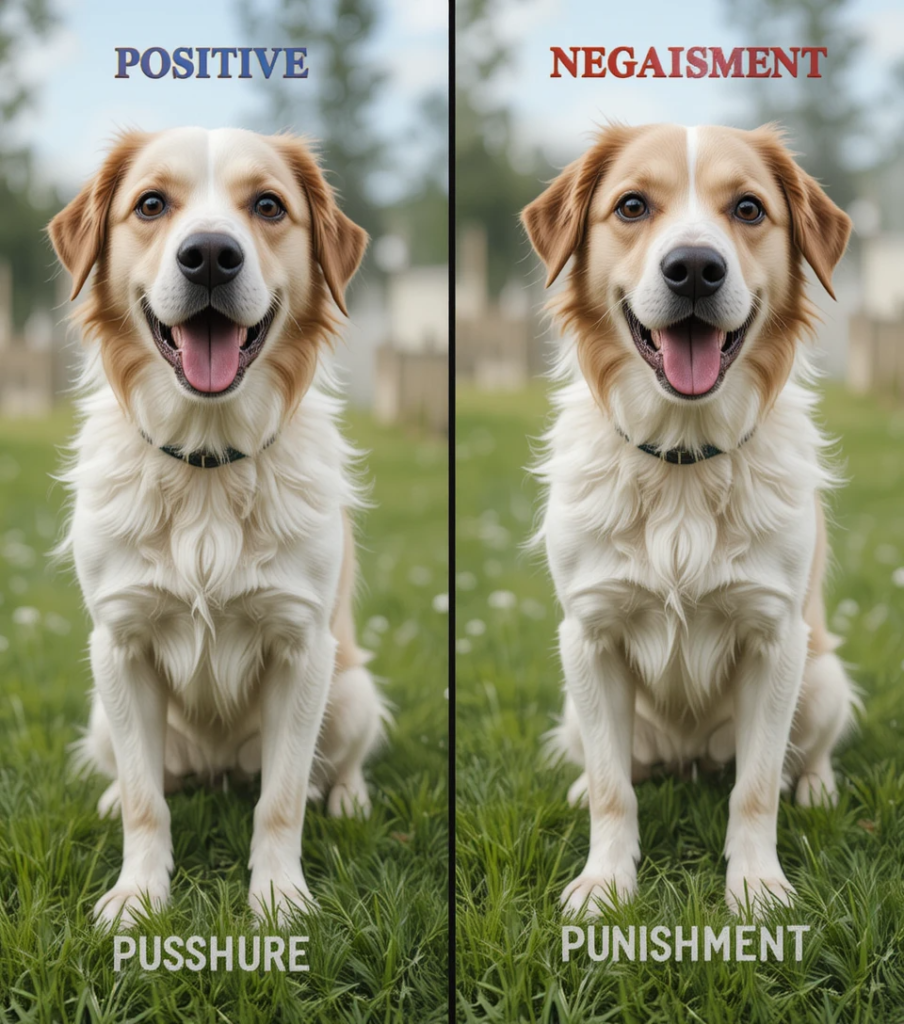Introduction
Punishment has long been used in animal behavior training, but recent insights in science and psychology are revealing its darker side. While it might appear to correct a dog’s unwanted behavior, punishment-based methods can backfire—damaging the human-animal bond and causing long-term emotional harm. This article explores why punishment in behavior modification may not only be outdated but also toxic to your pet’s well-being.
Understanding Behavior Modification
Behavior modification is a structured approach to changing an animal’s responses to certain stimuli. It’s based on behavioral psychology and learning theory—particularly operant conditioning, where behavior is influenced by consequences. Reinforcement encourages a behavior to continue, while punishment aims to reduce or eliminate it.
What Is Punishment in Training?

In training, punishment doesn’t mean abuse—but it does mean applying an unpleasant consequence. There are two types:
- Positive punishment: Adding something aversive (e.g., a leash jerk).
- Negative punishment: Taking away something the animal wants (e.g., ending playtime).
While legal and often subtle, these strategies can still cause emotional distress, especially when misused or overused.
Short-Term Gains vs Long-Term Harm
Punishment often delivers immediate results. A dog may stop barking, lunging, or jumping after a harsh command or correction. But this suppression comes at a price—fear, mistrust, and in some cases, learned helplessness, where the animal gives up altogether.
Common Punishment Techniques and Their Impact
- Shock collars
- Choke chains
- Yelling or loud corrections
- Physical corrections (like pushing or leash jerks)
- Time-outs or isolation
Each method aims to reduce behavior by causing discomfort or fear. However, these tools can lead to aggression, anxiety, and behavioral shutdowns—especially in sensitive or rescued dogs.
Scientific Perspective on Punishment
Studies by the American Veterinary Society of Animal Behavior (AVSAB) and other authorities conclude that positive reinforcement is not only more humane but also more effective. Punishment creates stress, impedes learning, and can even increase aggression in dogs.
Ethical Concerns in Aversive Training

Animals are sentient beings with emotions, memories, and personalities. Using fear or discomfort to control them raises serious ethical questions. Compassion-based training respects a dog’s autonomy, building trust instead of fear.
Positive Alternatives to Punishment
Some alternatives to punishment include:
- Clicker training
- Treat-based reinforcement
- Redirecting unwanted behavior
- Shaping desired behaviors through consistency
These techniques not only build confidence in your dog—they also strengthen your bond.
When Training Turns Toxic: Case Examples
Consider a dog that begins to snap at strangers after months of shock collar training. Or a once-playful puppy who now hides when called. These are not bad dogs—they’re victims of toxic training.
Conclusion: Toward Humane Behavior Modification
Punishment may promise fast fixes—but at the cost of a dog’s emotional health. As guardians and caretakers, we must seek science-backed, humane methods that prioritize trust, empathy, and respect.
Choose compassion. Choose education. Choose better.
🙋♀️ 10 Frequently Asked Questions
- What does punishment mean in dog training?
Punishment in training means applying a consequence to reduce unwanted behavior, but it’s often misunderstood or misused. - Is it ever okay to use punishment in behavior correction?
Experts recommend avoiding punishment due to its emotional risks and advocating for positive methods instead. - What are the dangers of punishment-based training?
Dogs may develop fear, anxiety, mistrust, or even aggression when trained with aversive methods. - How do shock collars affect a dog’s behavior and well-being?
Shock collars can cause stress, fear, and behavioral shutdown, undermining the training goal. - What’s the difference between positive and negative punishment?
Positive punishment adds an unpleasant stimulus; negative punishment removes something desirable. - Can punishment make my dog more aggressive or fearful?
Yes—studies show that fear-based training can increase aggression and stress responses. - Are there science-backed alternatives to punishment in training?
Yes! Positive reinforcement, clicker training, and redirection are all proven effective. - Why do some trainers still use aversive methods today?
Many rely on outdated methods or focus on quick fixes rather than long-term behavioral change. - What should I do if my dog doesn’t respond to positive methods?
Consult a certified behaviorist—there may be underlying issues needing professional support. - How can I find a humane, certified dog trainer near me?
Look for certifications like CPDT-KA, Fear Free, or IAABC, and read reviews from other pet owners.

